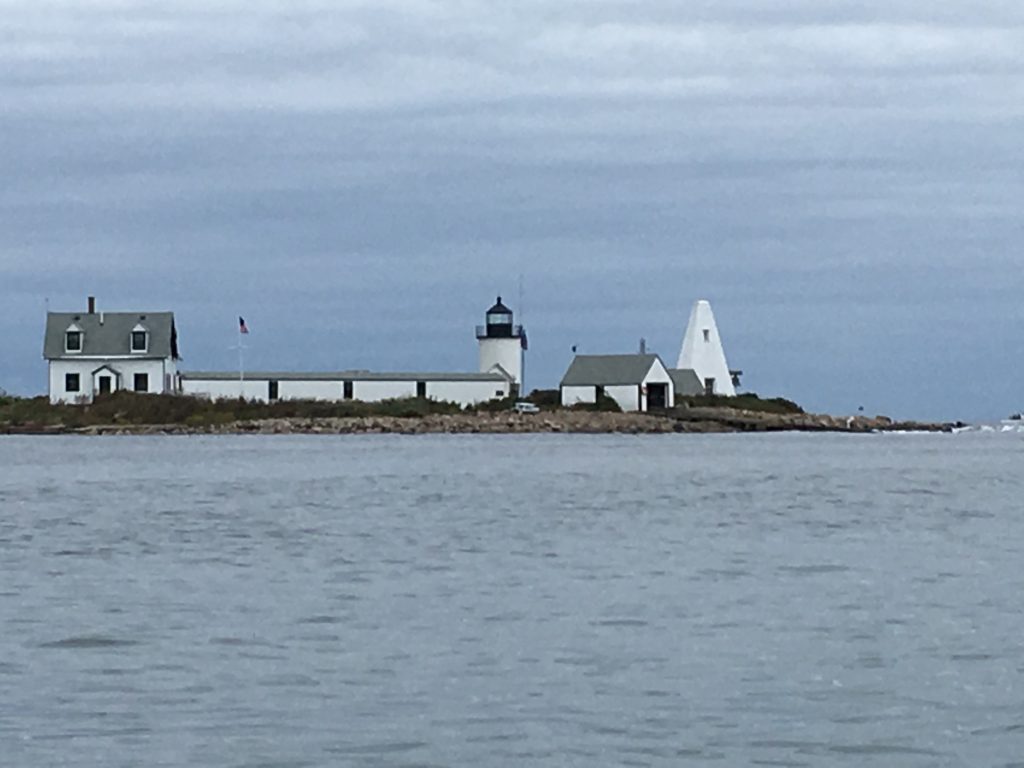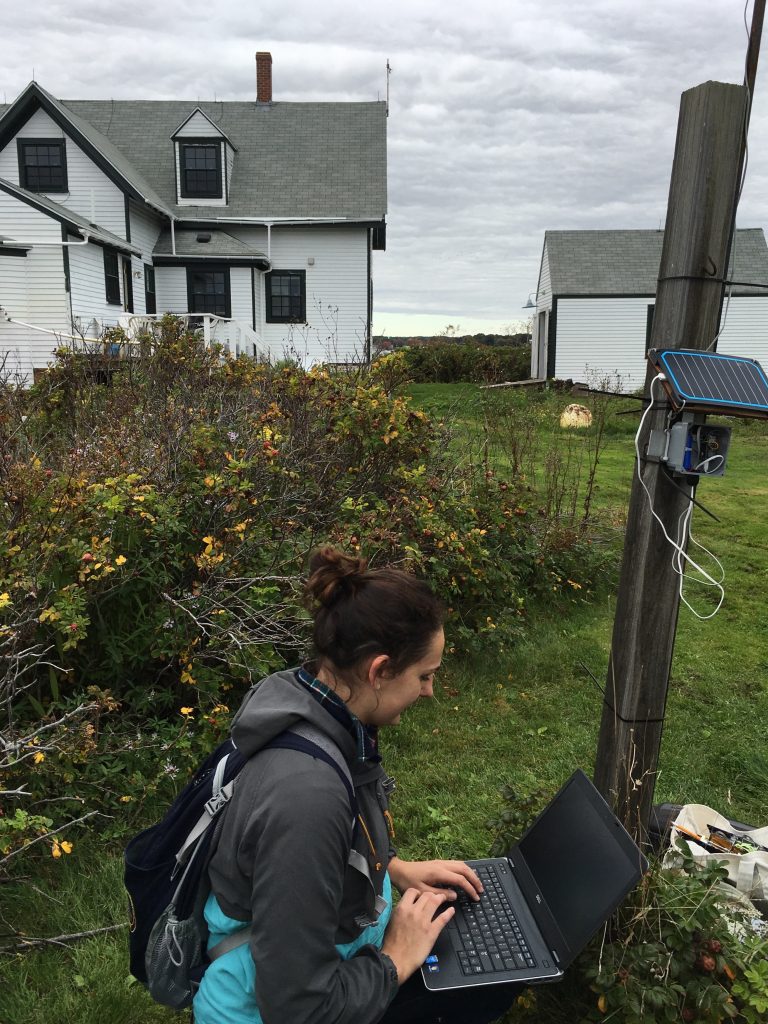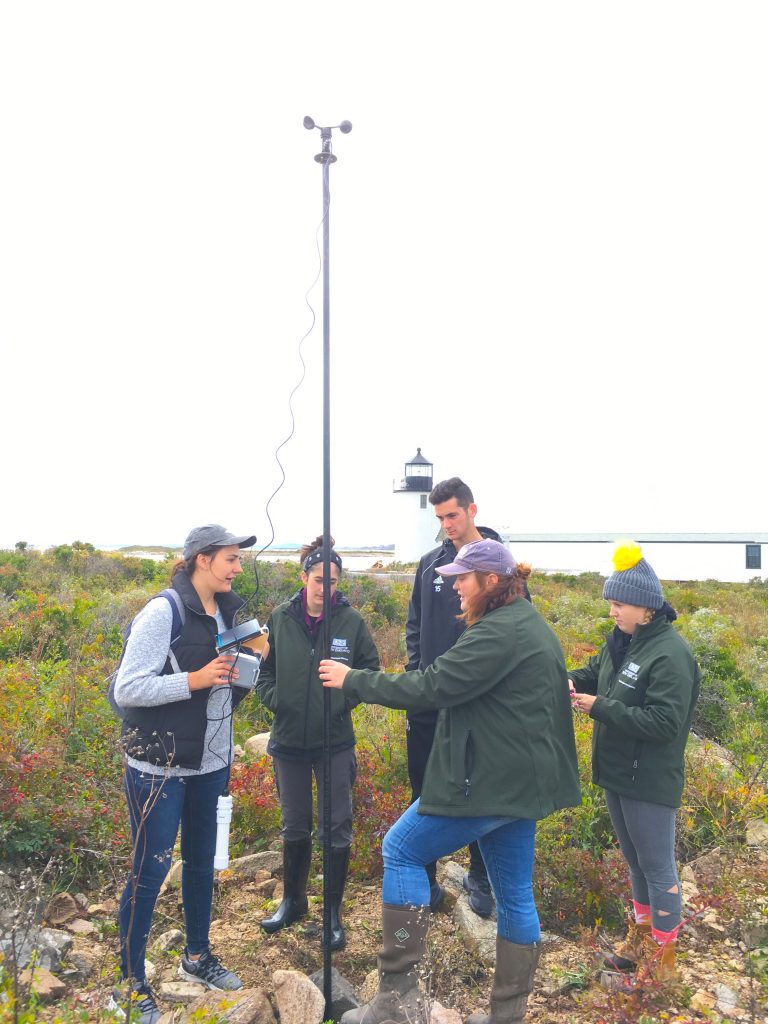Maybe you have heard the news that the Gulf of Maine is one of the fastest warming bodies of water on earth. It is also experiencing sea level rise, ocean acidification, algal blooms and an increase in invasive species. All of this is threatening the Gulf and the people who depend on it for their livelihoods. At times it all seems overwhelming. What can be done?
Just over a year ago, a group of educators and coastal researchers came together with the Executive Director of the Gulf of Maine Institute, Dr. John Terry, to talk about all of this. After much discussion, the group decided to launch a new initiative, and to call it “Community-Based Stewardship.” The idea was to engage local students with scientists and other professionals in their own communities so they could tackle some of the problems they were seeing right in their backyards – which happen to be in the Gulf of Maine watershed. Pam Morgan, Ph.D., a professor in the Department of Environmental Studies, was part of this group, and she went on to help create the first pilot project for this new initiative.
In the fall of 2018, students at nearby Kennebunk High School and at UNE enrolled in a course that Morgan and high school teacher Melissa Luetje designed, to be offered through UNE’s Department of Environmental Studies. The course aimed to educate students about the Gulf of Maine, but more importantly, they were to learn research and problem-solving skills. Their first project was to investigate the feasibility of alternative energy for Goat Island, which is located in nearby Cape Porpoise Harbor.

Goat Island is home to a lighthouse and a keeper’s house, and most of the power for the island comes from an underground cable that is starting to falter. The owners of the island, the Kennebunkport Conservation Trust, were keen to engage the students in determining the feasibility of getting the island off the grid. Leia Lowery, Education Director for the Trust, helped provide the students with connections in the local community so they could learn about the island’s history and energy needs. She also became a constant collaborator in the course.

Over the fall semester, the students collected solar and wind data from the island itself, and tidal flow data from the channel next to the island. Michael Esty, from UNE’s Makerspace, was enlisted to help them build low-cost data collectors using components purchased by the Gulf of Maine Institute, and to program the data collectors using free Arduino software. The Trust provided boats to get the students to and from the island. In this class, there were no traditional lectures. The students helped to define the research questions and methods, and then they analyzed the data they collected. As with all research, there were issues that needed to be dealt with along the way, such as when they discovered the solar data collector upside down after a storm.

During the spring semester, the students are learning about social science research methods, as they seek to discover what people in the local community think about the possibility of solar panels or a wind mill on the island, or tidal turbines in the harbor. At the end of the year, they will present all of their research results to the community, along with their recommendations. “An exciting part of this project for me has been seeing the students grapple with all kinds of issues that come up when you do a research project. The high school students have never had this type of research experience before, and even many of the UNE students are conducting a large research project for the first time.”

In addition to the research questions the students are asking in the class, Morgan and Luetje are exploring larger questions having to do with science education and the effectiveness of this type of course. During this first pilot year, they are gathering data to assess the impact of the course on the students’ perceptions of research and their understanding of how problems are solved. One tool they are using is the Research on the Integrated Science Curriculum (RISC) survey, which they administered before the class began and which they will give to the students again at the end of the year. The RISC survey has been used at a number of colleges to assess student learning in integrated or interdisciplinary science courses.
Will this model help students gain skills in research and problem solving that they can later implement in their careers or in their own communities? Will they have a greater understanding of the interdisciplinary nature of environmental problems? Morgan and Luetje would like to answer those questions. Because if the answer to those questions is “Yes,” then this model may be able to help in a small way to address some of the problems that the Gulf of Maine is facing.
